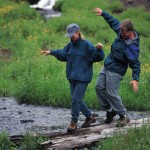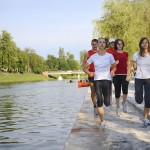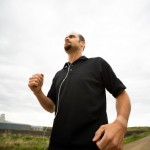 Here’s how to incorporate exercise while traveling:
Here’s how to incorporate exercise while traveling:
Walk around town. True, a cab or the subway can be faster, but by walking around you’ll get a better and authentic feel for the area via the shops and local businesses. You will also see more of the city, as well as discover interesting side streets to explore.
Plan ahead. Book a hotel that has a gym or pool you can use. Look for a YMCA or other fitness club that allows guest visitors or has a reciprocal program with your home gym. Cities such as Los Angeles, CA even have running tours that offer guided runs (so you know the neighborhood is safe.) Investigate the local area for a state park or natural wonder that needs to be explored with camera in hand.
Pack a jump rope. Yes, a simple little jump rope can get your heart rate soaring quickly while putting a smile on your face. Most of us haven’t skipped rope since we were children, but it is still fun even as an adult. Jump ropes are light, portable and don’t take up much room in your bag. You can also share the fun with your travel companions by setting a competition of who can jump the most times in a row without stopping.
Put together a quickie workout. Look around your hotel room for items that may be used to add resistance as in strength training (for example, bottles of water, a backpack with a few books in it, a door frame, set of stairs). The creativity involved can almost be as rewarding as the workout itself.
Traveling is fun, but don’t forget to take your fitness with you. Make an effort to find down time when on the road during which you can sneak in a workout. Remember that the government recommends accumulating 30 minutes of activity a day. With the above tips, it shouldn’t be too hard.
Mollie Millington is a London-based personal trainer, available for in-person and virtual training. www.ptmollie.com. Mollie may also be contacted via @PTMollie on Twitter.
 Subscribe
Subscribe







